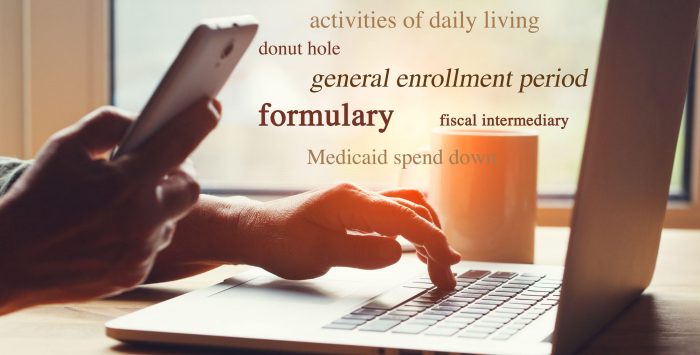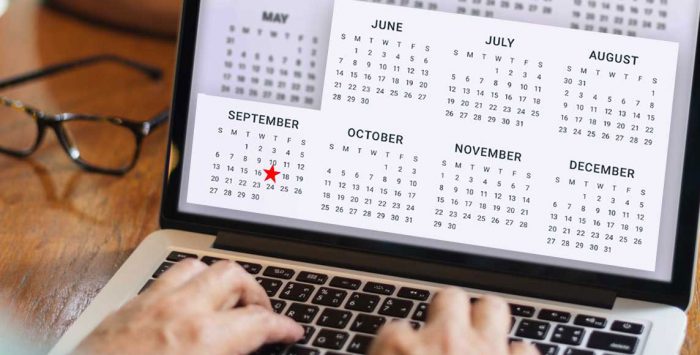What is Medicare Easy Pay?
Medicare Easy Pay is a way to have certain Medicare premiums automatically deducted from your bank account, so that you don’t have to remember to pay them each month. There is no fee to use Medicare Easy Pay, and it can be used to pay Part A premiums (although most people pay no premium for Part A), Part B premiums, and IRMAA surcharges for Part D and Part B. Here’s a sample Easy Pay statement.
But most people don’t need to use Easy Pay because their Medicare Part B premiums are automatically deducted from their Social Security or Railroad Retirement check (and most beneficiaries don’t have to pay IRMAA surcharges or Part A premiums).
Who can use Medicare Easy Pay?
Medicare Easy Pay can be used by anyone who would otherwise have to pay premiums from a source other than a Social Security or Railroad Retirement check to Medicare each month. This means they’re enrolled in Medicare but do not receive Social Security or Railroad Retirement benefits.
The vast majority of Medicare beneficiaries either already receive Social Security (or Railroad Retirement) benefits or will start to receive those benefits within a few years of enrolling in Medicare.
The average age at which people begin to receive Social Security retirement benefits is slightly before they become eligible for Medicare. But although people can begin receiving Social Security retirement benefits at age 62, they can maximize their monthly check by waiting until as late as age 70 to start receiving benefits. So it’s not uncommon for a person to receive Medicare for a few years before starting to receive Social Security retirement benefits.
But for those who will never receive Social Security or Railroad Retirement benefits – as well as those who haven’t yet started to receive them – the Easy Pay program can help to automate monthly premiums and eliminate the hassle of having to keep track of paying monthly invoices.
Can I use Easy Pay with any type of Medicare coverage?
Easy Pay can only be used for premiums that are paid directly to Medicare. Easy Pay cannot be used to pay premiums for private coverage, including Medigap, Medicare Advantage, Medicare Part D, or an employer-sponsored plan that supplements your Medicare coverage. But those plans generally all have their own options for automatic payment; you can contact the plan to see what automatic payment programs they offer.
A few notes about Medicare premiums that can be paid with Easy Pay:
- Most Medicare beneficiaries pay no premium for Part A, because they (or a spouse) have enough work history to qualify for premium-free Part A.
- Most Medicare beneficiaries are not subject to IRMAA:
- In 2024, about 4.9 million Medicare beneficiaries paid Part B IRMAA surcharges — about 7% of the 67 million total enrollees,
- and about 4.2 million paid Part D IRMAA surcharges. (The income thresholds are the same for both, but more beneficiaries have Part B than have Part D.)
- Part B premiums are applicable to all Medicare beneficiaries (in some cases, this can be covered by other programs).
Can I use Easy Pay to pay Medicare out-of-pocket costs?
No, Easy Pay is just for premiums. If you receive medical services and owe a deductible, copay, or coinsurance, you’ll pay it directly to the doctor, medical facility, or pharmacy that provides your treatment.
Depending on the type of care and the facility involved, you may pay at the time of service (for example, when you pick up a prescription) or you may receive a bill later on. In that case, hospitals and other medical providers generally have options that will allow you to pay your bill online, over the phone, or by mailing a check or credit/debit card information.
How do I sign up for Easy Pay?
You can sign up for Easy Pay through your online My Medicare account (create an account, or login if you already have one). Once you’re logged in, you’ll select “My Premiums” and then “Sign Up” to enroll in Easy Pay.
Or you can enroll in Easy Pay by printing the Authorization Agreement for Preauthorized Payments, filling it out, and mailing it to:
Centers for Medicare & Medicaid Services
Medicare Premium Collection Center
P.O. Box 979098
St. Louis, MO 63197-9000
Once your Easy Pay enrollment is activated, you’ll receive an Easy Pay statement around the 10th of each month, letting you know how much will be deducted from your account that month. The premiums will be deducted around the 20th of the month.
How long will it take for Easy Pay to activate?
Once you submit your Easy Pay enrollment, it can take six to eight weeks before it takes effect. Until then, you’ll need to make sure you continue to pay any Medicare premiums that are due. (Note that Part B premiums are usually charged quarterly, while Part A premiums and Part D IRMAA surcharges, if applicable, are charged monthly.) You can pay premiums manually through your My Medicare account, via your bank’s bill pay system, or by filling out the payment coupon at the bottom of your invoice and mailing it to Medicare with a check or payment information.
Footnotes
Tags: Medicare premiums, premiums






